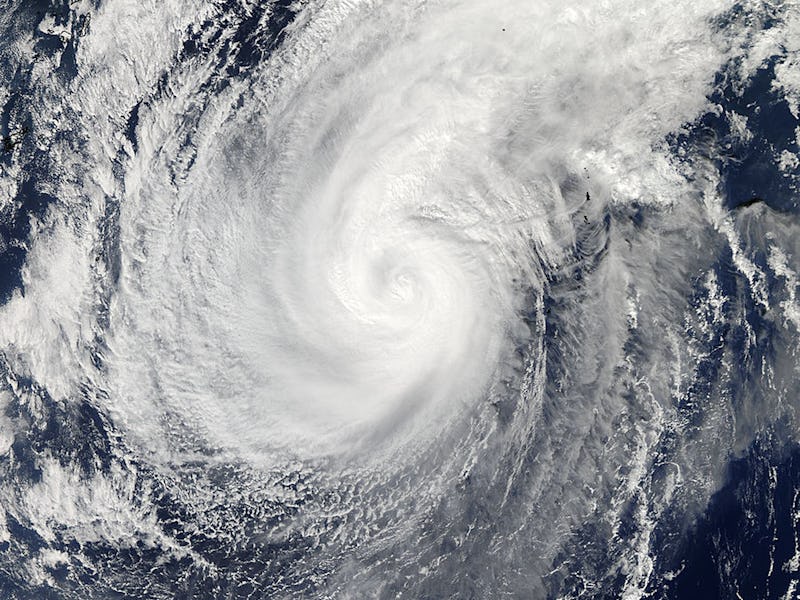New Turbines Could Let a Single Typhoon Power Japan for 50 Years
Normal designs fall apart under pressure from storm' winds.

Typhoons are huge, fearsome, and devastating storms. But what if there was a way to turn all this destructive power into useable electrical power? A Japanese engineer says he has a way to harness this awesome force, which he hopes could usher in a “Typhoon Hydrogen Society” in the future.
Whereas other people might see typhoons — which are what hurricanes are called when they form in the northwest Pacific — as a threat, Atsushi Shimizu sees potential. In 2013 Shimizu founded the green tech firm Challenergy, and set to work designing a wind turbine that wouldn’t crumble under the punishing winds of a typhoon.
Wind power hasn’t seen much success in Japan for this very reason. “For decades, Japan has brought in European-style wind turbines, not designed for typhoon zones, and installed them with no careful consideration,” Shimizu told CNN. “They’ve broken almost entirely.”
To make his turbines typhoon-proof, Shimizu and his team did away with the traditional windmill-like design everybody pictures. His turbines are boxier, consisting of three pillars rotating around a central vertical axis so as to better withstand unpredictable wind patterns. They used technology that took advantage of the Magnus effect — the same thing that happens when a spinning ball curves rather than go in a straight line — to give them the ability to prevent the turbine from spinning out of control in a storm.
This stability isn’t without its downsides. A normal, propeller wind turbine generally operates at about 40 percent efficiency, while Challenergy’s design maxed out at around 30 percent during a 2015 test. However, those standard bladed turbines can’t operate in a typhoon.
The energy from just one typhoon, Shimizu told CNN, could power Japan for 50 years (assuming you could harness every last bit of it, of course).
Challenergy set up their first prototype in Okinawa in July, and now they’re in the unique position of waiting for a typhoon to hit the city so they can test it.
Storing this massive amount of wind energy isn’t the easiest endeavor. Typical wind energy companies use a handful of methods to store the energy they’ve harnessed for a less windy day, including huge batteries, hydrogen fuel cells, and compressed air. Shimizu told Inverse that “power storage system[s] [are] one of our issues.”
To solve this problem, Shimizu said Challenergy wants to store the energy in hyrdrogen.
“We expect Hydrogen to store the power generated from the typhoon,” Shimizu says, “We could use typhoon to produce enormous Renewable Hydrogen.”
Typhoons hit Japan on a regular basis.
If everything works, Shimizu’s turbines could be a boon for the island nation, which currently imports nearly 85 percent of its energy requirements. Japan was a big proponent of nuclear energy, but has shifted away from that path since the Fukushima disaster in 2011.
Japan is currently investing heavily in solar energy, but wind energy tends to give you a lot more bang for your buck — especially if that bang is a gigantic typhoon, and you’ve got the tools to take advantage of it.